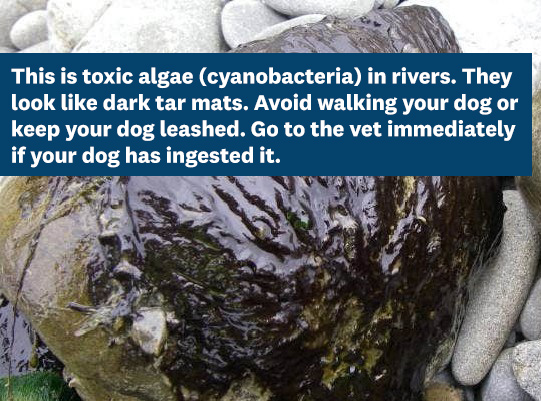ORC’s Senior Scientist Water Quality, Rachel Ozanne, says the ORC has received a number of reports of suspected toxic algae from the public during the past fortnight,
“While we’ve not identified any additional sites where blooms are occurring, it’s pleasing to see the growing level of awareness in the community,” she says.
ORC field staff are continuing to monitor waterways, respond to reports, test and erect warning signs where able, but Ms Ozanne says not all sites with toxic algae will have warning signs.

Toxic algae in lakes
“Being able to identify toxic algae is the best way to for people to keep themselves and their dogs safe.”
“Toxic algae are naturally occurring and widespread. There’s a vast number of waterways in Otago including many on private land and at remote and less accessible locations. People should be aware of what the algae looks like, or if in doubt, keep dogs on their lead and stay out of the water,” she says.
People can check LAWA and ORC web sites (below) for the most up to date algal information.

Toxic algae in rivers
She highlighted that in rivers toxic algae mats can detach and float downstream accumulating along the river edges, so it is important to check these areas where toxic algae can be most accessible to dogs and small children.
Blooming algae in lakes can look like a bright green “pea soup”, and ingesting it could cause sickness and potentially death, for animals and humans.
ORC follows the Ministry for the Environment guidelines in managing its responses to toxic algae.
This may include installing information signs at popular access points when toxic algae levels reach the alert threshold or at known toxic algae hotspots.
“We also use social media, our website and LAWA to help keep the public up to date on potential health risks and issue warnings,” she says.
Known hotspots around Otago
Rivers which are known toxic algae hotspots around Otago are Silver Stream, Mosgiel, Cardrona River, Central Otago, Manuherekia River, Central Otago, Hāwea River, Central Otago and Waianakarua River, North Otago.
Lakes which are known toxic algae hotspots in Otago are Lake Waihola, Tomahawk Lagoon in Dunedin and Butchers Dam in Central Otago.
There have been recent reports of toxic algae at Butchers dam, Lake Waihola, Ophir and Waianakarua River.
Ms Ozanne says over the holiday period ORC will continue to monitor water quality and toxic algae levels at our routine contact recreation monitoring sites.
“Our website will also be updated with new sightings of suspected toxic algae reported by the public,” she says.
Find the latest toxic algae updates and sightings
LAWA’s www.lawa.org.nz/learn/factsheets/toxic-algae
If you see anything which could be toxic algae, call ORC’s 24/7 Pollution Hotline on 0800 800 033 or email pollution@orc.govt.nz
Ms Ozanne says if an animal or human becomes sick they should consult a vet or doctor immediately.
Watch for symptoms, signs of poisoning
Exposure to toxic algae may cause symptoms such as:
- Skin rashes
- Nausea
- Tummy upset
- Tingling and numbness around the mouth or tips of fingers.
Signs of poisoning in animals include:
- Lethargy
- Muscle tremors
- Fast breathing
- Twitching
- Paralysis
- Convulsion
